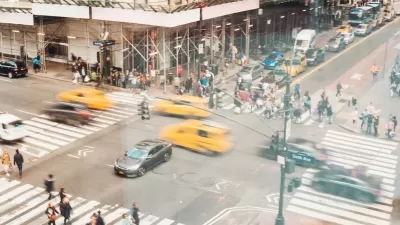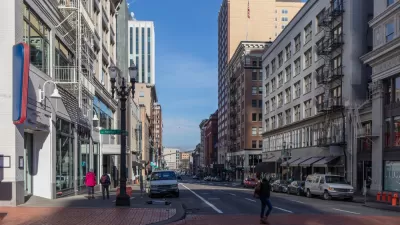Despite a nationwide rise in traffic fatalities, almost half of U.S. states have transferred federal road safety dollars to other projects.

According to an article by Daniel C. Vock in Route Fifty, “nearly half of state transportation departments have diverted money from Washington specifically designated to making highways safer,” prompting concerns among some members of Congress. “U.S. Rep. Peter DeFazio, an Oregon Democrat who chairs the House committee on transportation and infrastructure, expressed his frustration over the common practice at a recent hearing. DeFazio said it was ‘very disturbing’ that, in the five years leading up to September 2021, 23 states transferred money out of the federal Highway Safety Improvement Program for other uses.” It should be noted that states are legally allowed to transfer up to half of the funding to other transportation-related uses.
“At a time when traffic fatalities remain at unacceptable levels and have increased substantially in every state over the last two years, we believe that the authorized amounts for HSIP should be the absolute minimum dedicated to safety improvements and transfers out should not be acceptable,” said Peter True, a spokesperson for the Democrats on the committee. Among the 23 states that moved safety funding to other uses are Wisconsin (48 percent), New Jersey (44.4 percent), and Maryland (41.3 percent).
Vock notes that “Several states added money to their program instead. In fact, both South Dakota and California more than doubled their allocation. Other states that diverted more money to the program were North Dakota, Georgia, Arkansas, Alaska, Montana, Washington and Virginia.”
FULL STORY: The States Shifting Road Safety Dollars Away From Safety Programs

Study: Maui’s Plan to Convert Vacation Rentals to Long-Term Housing Could Cause Nearly $1 Billion Economic Loss
The plan would reduce visitor accommodation by 25,% resulting in 1,900 jobs lost.

North Texas Transit Leaders Tout Benefits of TOD for Growing Region
At a summit focused on transit-oriented development, policymakers discussed how North Texas’ expanded light rail system can serve as a tool for economic growth.

Why Should We Subsidize Public Transportation?
Many public transit agencies face financial stress due to rising costs, declining fare revenue, and declining subsidies. Transit advocates must provide a strong business case for increasing public transit funding.

How to Make US Trains Faster
Changes to boarding platforms and a switch to electric trains could improve U.S. passenger rail service without the added cost of high-speed rail.

Columbia’s Revitalized ‘Loop’ Is a Hub for Local Entrepreneurs
A focus on small businesses is helping a commercial corridor in Columbia, Missouri thrive.

Invasive Insect Threatens Minnesota’s Ash Forests
The Emerald Ash Borer is a rapidly spreading invasive pest threatening Minnesota’s ash trees, and homeowners are encouraged to plant diverse replacement species, avoid moving ash firewood, and monitor for signs of infestation.
Urban Design for Planners 1: Software Tools
This six-course series explores essential urban design concepts using open source software and equips planners with the tools they need to participate fully in the urban design process.
Planning for Universal Design
Learn the tools for implementing Universal Design in planning regulations.
Ascent Environmental
Borough of Carlisle
Institute for Housing and Urban Development Studies (IHS)
City of Grandview
Harvard GSD Executive Education
Toledo-Lucas County Plan Commissions
Salt Lake City
NYU Wagner Graduate School of Public Service





























